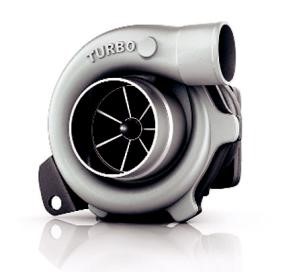Failed Turbo Shaft by Oil Contamination. Below are the most common failure modes of turbochargers for both gas and diesel engines:
- Contaminated oil
- Lack of oil
- Foreign debris in air stream
- Excessive heat/friction
- Hot shutdowns
- Physical contact of rotating components within the housing
Although the above list is well known within the industry, it is worth taking a second look periodically to ensure the best performance and longest lasting turbos.
In a perfect world the turbo should last as long as the engine. Unfortunately, we don’t live in a perfect world. Replacing a turbo is expensive. If we do not find out the specific reason the turbo failed, the replacement turbo is apt to wear out at a much sooner than it should.
The #1 killer of turbos in all engines is contaminated or dirty engine oil. Keeping the engine oil clean is even more critical in gasoline engines where temperatures can be up to 1800 degrees Fahrenheit with speeds up to 300,000 RPM. Whereas compared to only 1200 degrees Fahrenheit and 100,000 RPM for a typical diesel application. The failures occur in a similar manner, regardless of the source of ignition, but, usually at differing rates. Gasoline engines tend to rev higher more often as many applications are considered sports models. Although there are more diesel car engines all the time with turbos, all modern diesel truck engines are turbocharged.
How?
The typical turbo shaft spins in two journal bearings. These bearings, made of a brass composite/alloy, are not fixed – they spin at theoretically half the speed of the shaft. As the dirty oil is introduced in a very narrow band through the holes in the rotating bearing, the holes score and wear the bearings surfaces. As the wear progresses, both the inside and outside diameters of the bearing are opened, allowing the shaft to “wobble” from excessive radial clearance. This is clearly seen in the bearing on the right in the photo below. Once this clearance is large enough for the shaft/wheel assembly to become out of balance or make contact with the housing (while rotating at 100,000 RPM or more), a catastrophic failure is imminent.
This is one reason why you should always require your customers to change the oil and filters and provide proof of those changes or he may risk a voided warranty.
Below, we have outlined some additional common failure modes of turbochargers and some tips on how to identify these root causes: lack of oil, foreign debris, hot shutdowns, and engine tuning.
As we look at some additional failure modes, one thing to remember is that there is always evidence of how the failure happened, but sometimes there are multiple factors contributing to the failure.
By Greg Arsenault. Credit: AERA
Read more here:



